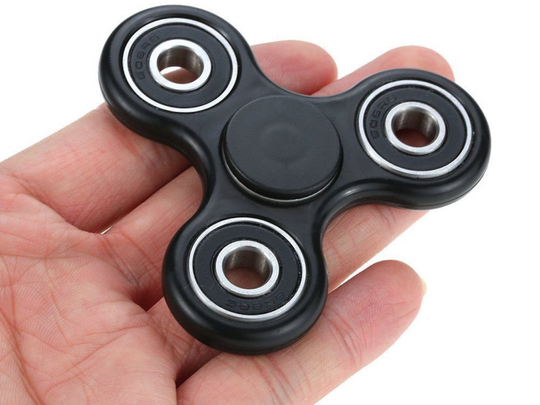
Dubai: A teacher at a tutoring centre in Dubai narrated to Gulf News the story of one of her students who would not do his homework without his fidget spinner.
Just like the yo-yo, the hoverboard and Pokemon craze that have come in waves over the years, the fidget spinner, a plastic toy that spins between the thumb and middle fingers, has taken over schools, becoming the must-have toy for every child and teenager.
However, the ongoing debate is not about how cool the spinner is, but more on whether it can be a tool that helps children focus.
“One of my five-year-old students is currently not able to focus or do his work without holding his spinner. As a teacher, I would say depending on the child and his personality, the toy could be either a fidget tool that helps them focus, or just another source of distraction,” said Layan Samir, a part-time children’s tutor.
She pointed out that since the spinner craze started, she has noticed that calm children who are willing to work in her classes spin the toy under their desks while working on their homework.
“For students who are [otherwise] well-behaved kids that may get distracted at times, I find that using the spinner helps them fulfil the need to fidget and therefore lets them focus on getting their work done,” explained Samir.
Hyperactive
However, for hyperactive children, who are a handful in class, the spinner is just an additional distraction, she added.
Egyptian Susan Ahmad, mother of two, said she is concerned about her boys aged seven and nine years using the fidget spinner while studying. “When it’s play time or TV time, I don’t mind them spinning it in their hands, I feel it sometimes makes them calmer because they’re focusing on spinning it fast,” said Ahmad. But when they are doing homework, her children are often distracted by competing on who can spin it faster, she said.
Some schools in the UAE, it is believed, have banned the toy. A senior school supervisor in Sharjah told Gulf News that the tiny gadget is the new fad among students.
“We see [children] bringing it to school and playing with it during break time. We have not been too concerned with it so far as nobody uses it during class time — that will not be allowed.”
Trading of the fidget spinner, another popular pastime, is also disallowed in the school, the supervisor said. “We don’t allow any kind of trading of it in classrooms,” he said.
The fidget spinner craze, however, is not going away anytime soon. Adults too are joining in the craze of fidget spinning with thousands of videos posted on social media channels teaching users to do different tricks with the tiny gadget.
(With inputs from Sajila Saseendran, Senior Reporter)
Can spinning toys calm children? Not really
Dr Padma Raju Varrey, psychiatrist at NMC Speciality Hospital in Abu Dhabi, says the claims that spinning fidget toys relieve attention-deficit disorder (ADD) or attention-deficit hyperactivity disorder (ADHD), autism and anxiety symptoms is only partially true.
“There is a concept called reciprocal inhibition. If a person is restless, he is advised to go and do a rigorous workout and that suppresses anxiety or subdues a person.
To some extent, the whirring moment of this gadget helps relieve stress and anxiety. But it is not recommended for children with Autism Spectrum Disorders (ASD).
These children usually seek stimulation by shaking, moving or nodding. This is called stimming and these toys with their movement provide visual stimming, which is more of a hindrance than help in cases of children with ASD.” It has the potential to lead to over-stimulation or over-stimming in children with ASD.
Dr Varrey says for adults and children, to some extent, holding the ball bearing between your index finger and thumb does provide a whirring movement which might prove to relieve anxiety as in the case of squeezee balls.
“But it is a visually distracting toy and does not help in ADD, ADHD or other disorders.”
Parents who have already provided the spinning fidget to their child have only two ways to handle the issue of obsession with it.
“Firstly, never give such toys to your child as these are no substitute for learning tools. Second, if you have provided the toy to the child, look for something which is brighter, more colourful and serves the purpose of entertaining the child while not disrupting his attention span.”
Suchitra Bajpai Chaudhary, Senior Reporter








